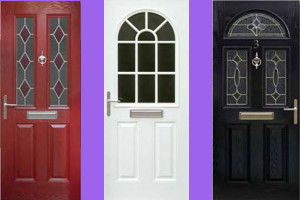Types of UPVC Door Hinges
Jewson provides a wide selection of doors made of uPVC which are ideal for a transformation or upgrade. If your uPVC doors are snagging on the floor or allow in draughts this is likely because of hinges that aren't aligned correctly.
To solve this problem, it is important to recognize the various kinds of hinges for upvc doors. Here are some suggestions about what to look for.
UPVC
UPVC hinges are used to support doors as they are open and closed. They are available in a range of sizes and colors and are designed to be used with wood as well as uPVC doors. window hinges repair can be used to both the external and internal door. However, it's crucial to choose the right type of UPVC door hinge for your door before you begin installing them.
uPVC is an acronym for Unplasticized Polyvinyl Chloride and is a popular material used in a variety of applications, such as window sills and frames. It is a low-maintenance, robust material that is frequently compared with timber and aluminium because of its strength, durability, cost efficiency and ease of installation.
Hinges are a crucial component of any door. A properly-fitting one can help reduce the noise and draughts, as well as providing a smoother closing and opening. They are typically secured to the jamb of the door as well as the door itself, so it is crucial to have the right hinges installed to ensure they operate smoothly.
There are many different types of UPVC door hinges on the market, and it's crucial to know which you've got before making any adjustments or repairs. If you have hinges like a Butt hinge, T hinge or flag hinge, for instance it is essential to know the functions each hinge does and how to adjust them when needed.
The Butt hinge is a standard feature on uPVC doors and is generally connected to the frame of the door and the edge of the sash. It's the most popular style of uPVC hinge and it allows for plenty of movement as well as an elegant appearance for the interior of your home. This kind of hinge is also usually adjustable, allowing you to adjust the alignment and position of your door over time.
If you have an T hinge however you'll see an adjustment screw at the bottom of the hinge that can be adjusted. You can use this to alter the hinge's compression by adding or removing the shims. It is recommended to begin by turning the screw a few times, then try it, and then make any further adjustments if needed.
A flag hinge is akin to a T hinge in that it's designed with a knuckle plate that features a cutout that resembles a flag on the end, enabling full rotation and movement. This is a different kind of uPVC hinge that's very easy to adjust. Simply loosen the screw on the knuckleplate, and then add the shims or take them off when you want to increase compression.
Whether you have a Butt or a flag hinge, it's essential to inspect your uPVC doors hinges regularly. It's not unusual to find them out of alignment or drop over time, especially if you use the door frequently and shut and open it. You can easily adjust your uPVC door hinges by following our simple guide, complete with diagrams and videos. Be sure to follow the instructions carefully to avoid causing any damage or causing further issues.

Butt
Hinges, the hardware component that keeps your windows and doors in place, are available in a variety of sizes, shapes, colors and materials that can be used for different needs. The best hinge is determined by the location of the project as well as the look you're trying to achieve. If you require a heavy duty hinge for your barn door, or you just want to add a few attractive touches to your cabinet, the options are endless.
Butt hinges, or stub hinges are the most commonly used kind of door hinge. They are easy to install and offer solid support for doors and frames without adding extra weight. They're not as strong as other hinges and might require maintenance.
A butt hinge is comprised of two plates or leaves with screw holes on each. They are drilled into the surface of the door and frame. They're joined together by a central pin, which is contained in the knuckle segment of each plate. When the doors are closed the hinge pin is hidden and only the knuckles are seen.
Butt hinges are able to support more weight since they have a larger knuckle. They are not recommended for doors which are open and closed continuously, as the abrasion could lead to premature wear.
Butt hinges are only suitable for recessed surfaces. Typically the hole is made into the fixed object to allow for the hinges however, sometimes the hinges are attached to the surface with a special fastener.
Butt hinges come in a variety of finishes and materials that can be customized to fit any exterior or interior installation, whether traditional wood or modern metals. They are available in various sizes to fit on any frame and door.
For projects that call for a more decorative or ornate appearance, butt hinges are also available in various styles such as strap and ball tip. These styles offer the same functionality as standard butt hinges, but with a different look.
While butt hinges are straightforward to install and provide solid, durable construction however, they are susceptible to security breaches due to their visible. Their exposed pins can be removed and the hinges tampered with making it possible for intruders to get through locked doors. All hardware components must be inspected and lubricated regularly to avoid this. This reduces friction that causes squeaky and binding hinges, and also extends their life span.
